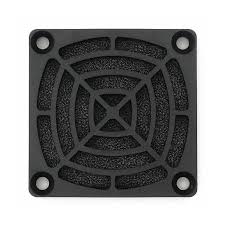Understanding the Role of Axial Fan Filters in Cooling Systems
In the world of cooling systems, Axial Fan Filters play a pivotal role in maintaining the efficiency and longevity of the equipment. This article aims to shed light on the importance of these components, their functionality, and their impact on the overall performance of cooling systems.
What is Axial Fan Filters?
Axial Fan Filters are a crucial component used in conjunction with axial fans in cooling systems. These filters are designed to remove dust and other particulate matter from the air that passes through the fan. This not only ensures the delivery of clean air but also protects the fan and other components from potential damage caused by these particles.
The Role of Axial Fan Filters in Cooling Systems
Cooling systems, whether in industrial machinery or electronic devices, generate a significant amount of heat. To maintain optimal performance and prevent overheating, these systems rely on fans to dissipate heat. Here's where the Axial Fan Filters come into play.
1. Protection: The primary role of an Axial Fan Filter is to protect the fan and the system from dust and other airborne particles. These particles, if not filtered out, can accumulate on the fan blades and other components, reducing their efficiency and potentially leading to system failure.
2. Efficiency: By keeping the fan and system clean, Axial Fan Filters contribute to the overall efficiency of the cooling system. A clean fan can operate at maximum speed and efficiency, providing optimal cooling.
3. Maintenance: Axial Fan Filters also reduce the need for frequent maintenance. By preventing dust accumulation, these filters prolong the lifespan of the fan and other components, saving time and resources on maintenance and replacement.
Types of Axial Fan Filters
There are several types of Axial Fan Filters available, each designed for specific applications and environments. Some of the most common types include:
1. Foam Filters: These are lightweight and cost-effective, ideal for environments with moderate dust levels.
2. Metal Filters: These are durable and resistant to corrosion, making them suitable for harsh industrial environments.
3. Pleated Filters: These offer a larger surface area for filtration, providing superior dust holding capacity.
Conclusion
Understanding the role and importance of Axial Fan Filters in cooling systems is crucial for anyone involved in the design, operation, or maintenance of these systems. By selecting the appropriate filter type and ensuring regular maintenance, one can optimize the performance of the cooling system, prolong the lifespan of its components, and ultimately, achieve better efficiency and reliability. A well-maintained Axial Fan Filter is key to a well-functioning cooling system.

